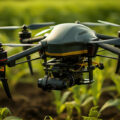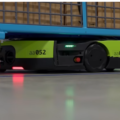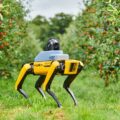Greenhouse farming is a rapidly growing industry driven by the increasing demand for fresh produce and the need to cultivate crops in controlled environments. The use of robotics in greenhouse farming has the potential to revolutionize the way crops are grown, providing farmers with new and innovative tools to improve the efficiency and productivity of their operations. In this article, we will explore the current state of the use of robotics in greenhouse farming and its potential benefits and challenges.
One of the primary benefits of using robotics in greenhouse farming is increased efficiency. Robots can automate many tasks traditionally performed by human workers, such as planting, harvesting, and pruning. This can significantly reduce labor costs and improve the speed and accuracy of these tasks. Additionally, robots can work around the clock without needing breaks, further improving the efficiency of greenhouse operations.
Another benefit of using robotics in greenhouse farming is improved crop quality. Robots can be equipped with advanced sensors and cameras that allow them to monitor crop health and growth in real time. This information can be used to optimize nutrient and water management, improving the overall health and yield of the crops. Additionally, robots can perform precise pruning and other maintenance tasks, further improving crop quality.
One of the biggest challenges of using robotics in greenhouse farming is the high cost of these technologies. Many small and medium-sized farmers may need help to afford the initial investment required to purchase and implement these systems. However, as the technology continues to evolve and become more accessible, it is likely that the cost of robotics in greenhouse farming will decrease, making it more accessible to farmers of all sizes.
Another challenge is the need for more standardization in the industry. There are many different types of robots and systems available, each with its own strengths and limitations. This can make it difficult for farmers to compare and select the best option for their needs. Additionally, there may be compatibility issues between different systems, which can limit the ability of farmers to integrate these technologies into their existing operations.
In conclusion, the use of robotics in greenhouse farming has the potential to revolutionize the way crops are grown, providing farmers with new and innovative tools to improve the efficiency and productivity of their operations. While there are challenges that need to be overcome, such as the high cost of these technologies and the lack of standardization, the use of robotics in greenhouse farming will continue to grow and evolve in the coming years. As the industry continues to evolve, it is essential for farmers to stay informed about the latest developments in this area and to consider the potential benefits and challenges of incorporating these technologies into their operations.






